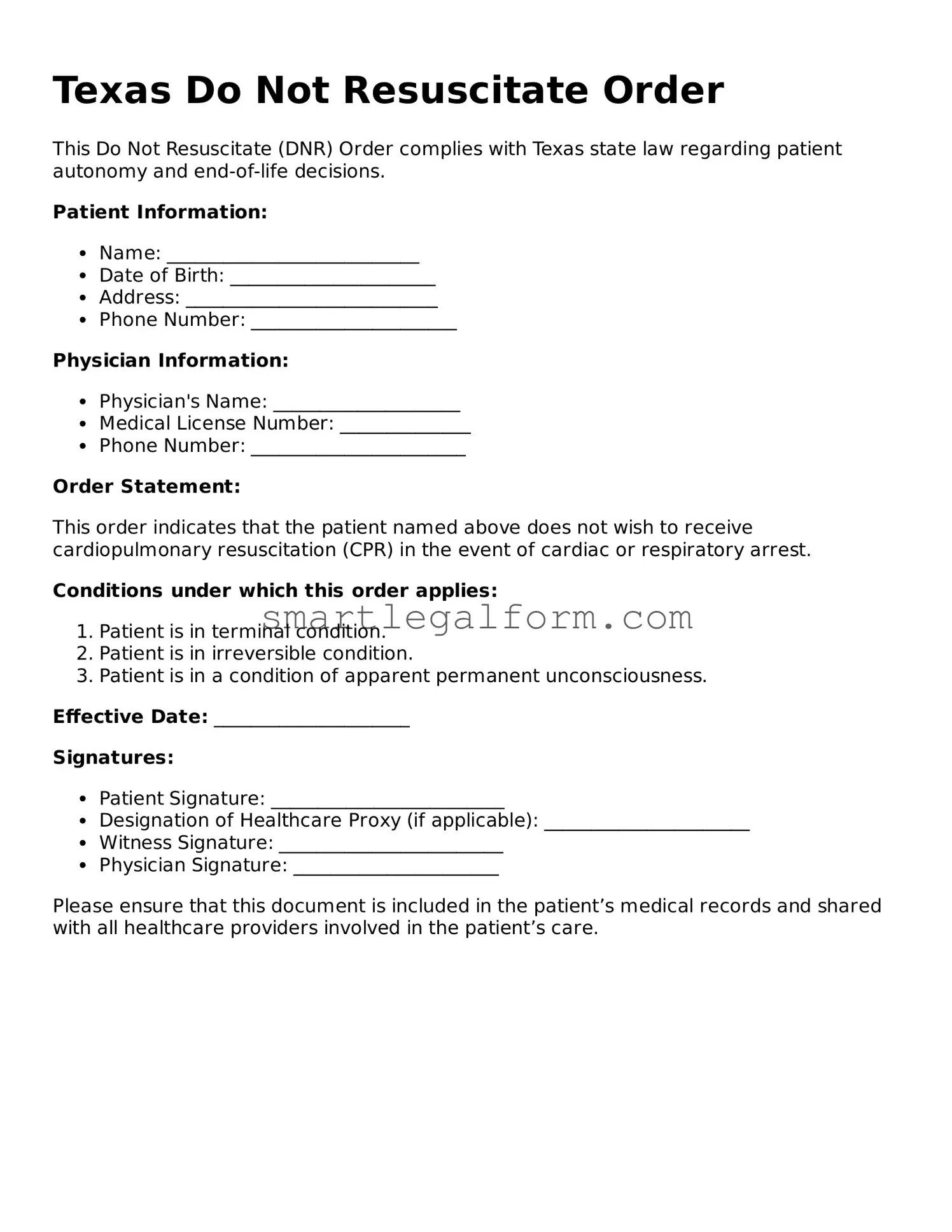Filling out a Do Not Resuscitate (DNR) Order form can be a sensitive and critical task. In Texas, this document is intended to communicate a person's wishes regarding resuscitation efforts in the event of a medical emergency. However, several common mistakes can hinder its effectiveness. Understanding these pitfalls can help ensure that your wishes are honored.
One frequent error is not discussing the decision with family members or healthcare providers before completing the form. Open conversations can clarify intentions and prevent confusion later. When loved ones are unaware of the person's wishes, it can lead to emotional distress and conflict at a time when clear communication is vital.
Another mistake involves failing to sign and date the form. A DNR Order is not valid unless it is properly executed. This means that both the patient’s signature and the date are essential. Without these, medical personnel may not recognize the document as legitimate, potentially leading to unwanted resuscitation efforts.
Some individuals neglect to ensure that the form is completed in accordance with Texas law. Each state has specific requirements regarding the DNR Order, including the necessary signatures and witness provisions. In Texas, the form must be signed by the patient or their legal representative and must also include the signature of a physician. Omitting any of these elements can render the order ineffective.
Additionally, many people fail to provide copies of the completed DNR Order to their healthcare providers. It is crucial that medical personnel have access to this document in emergency situations. Keeping copies in easily accessible locations, such as with a primary care physician or in a hospital chart, can facilitate timely decision-making.
Another common oversight is not reviewing or updating the DNR Order regularly. Life circumstances can change, and so can a person's wishes regarding resuscitation. It is advisable to revisit the document periodically, especially after significant health changes or major life events, to ensure that it still reflects the individual's current preferences.
Some individuals mistakenly assume that a DNR Order applies to all medical situations. In reality, a DNR specifically addresses resuscitation efforts in cases of cardiac arrest or respiratory failure. It does not prevent other types of medical treatment. Understanding the scope of the DNR Order is essential for ensuring that it aligns with one’s overall healthcare goals.
Finally, a lack of clarity in the language used on the form can lead to misunderstandings. It is important to use straightforward language and to avoid ambiguous terms. Clear communication of one’s wishes can prevent misinterpretation by healthcare providers during critical moments.
By being aware of these common mistakes, individuals can take proactive steps to ensure that their DNR Orders accurately reflect their wishes. Thoughtful consideration and thorough communication are key components in making this important decision.
